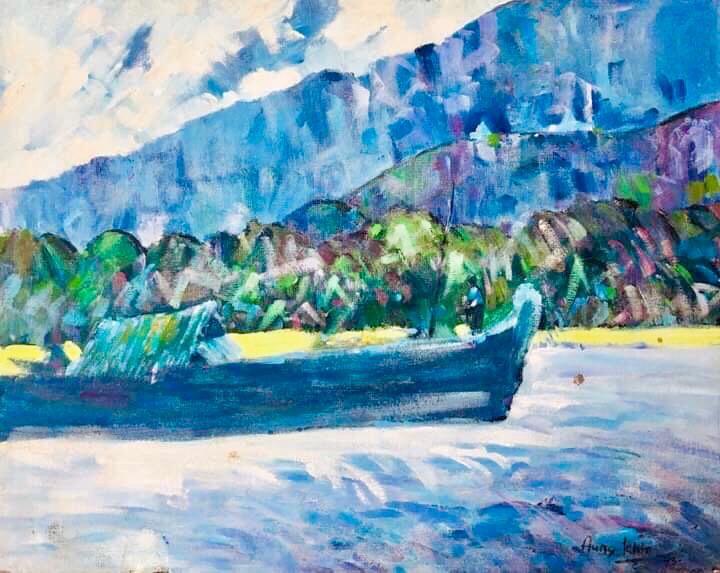Exhibition
20th Century Burmese Paintings – the Essential Artists
20 June – 19 July 2019
Burmese art history has stretched for more than 800 years in different painting forms and techniques; from the ancient wall and cloth paintings to the traditional used of parabaiks in court manuscripts. It was only in the nineteen century, the British arrival and colonialism that the emergence of the modern era in Burmese painting started.
READ MORE The emergence of Burmese modern art history can be partly answered or the starting off, following the fall of the last Konbaung Dynasty to the British in 1885. Burmese court painters and painters a liked studied the western concepts of light, perspective and portraiture, mastering the western styled of watercolor and oil paintings. Artists liked Saya Chone (1866 – 1917), Saya Thaung (1865 – 1940), Saya Aye (1872 – 1930), M.T. Hla (1874 – 1946), Saya Myit (1888 – 1966), Saya Saung (1898 – 1952) and Yatanabon Maung Su (1903 – 1965) were essential names. The famous Saya Chone worked mainly with opaque watercolor on cloth; his oeuvre including court paintings, historical paintings, religious paintings, landscape works, as well as individual and family portraits. The Burmese European-styled painters reached their height in the early twentieth century, with the opening of western art schools and numerous artists travelled to Europe to better their skills in western painting techniques and returning to be the master painter of his own. In the forefront was U Ba Nyan (1897 – 1945), the founding father of the modern art movement. Most artists of the Rangoon School were influenced by U Ba Nyan’s opaque watercolor paintings and oils, with a distinct focus on chiaroscuro. Then came the prolific painter U Ngwe Gaing (1901 – 1967), who was skilled in both oil and watercolour, whom many see as Burma’s leading artist in the post-World War 2 period. U San Win (1905 – 1981), another important artist, is considered the first Burmese painter to embrace impressionism. Mandalay is always the site of artistic importance. Artists of the Mandalay School; a diverse group of western-style modern artists, such as U Ba Kyi (1912 – 2000) who created his own distinctive modern Burmese neo-traditional style. Then, the self-taught Burmese artist, U Ba Thet (1903 – 1972), who was the advocate of experimental art. After Myanmar gained independent, some artists started experimented using Burmese traditions with western painting techniques. Artists liked Kin Maung (Bank) (1908 – 1983), Bagyi Aung Soe (1924 – 1990), Paw Oo Thett (1936 – 1993) and Aung Khin (1921 – 1996) painted using realism, impressionism, cubism and abstract expressionism with Burmese ancient traditional murals, motifs and designs. Kin Muang (Bank) was famous for his used of Pagan period’s old wall paintings to influence his modernist paintings. The prodigy artist, Bagyi Aung Soe, who studied in Shantinikitan, the famous Tagore’s Indian art school, was a significant influencer in the development of Burma’s post-modernism art. Other essential artists of the Burmese modern art era to mention were, U Saw Maung (1900 – 1969), U Hla Shein (1904 – 1979), U Ohn Lwin (1907 – 1988), Ba Yin Galay (1915 – 1988), Myat Kyaw (1918 – 1977), U San Pe (1918 – 1977) and U Nan Waii (1926 – 2008). Finally, U Lun Gywe (1930) who studied under U Ba Nyan’s apprentice U Thein Han started as a realist painter of U Ba Nyan and U Thein Han mold, but only later in the 1990s to move to impressionism.








